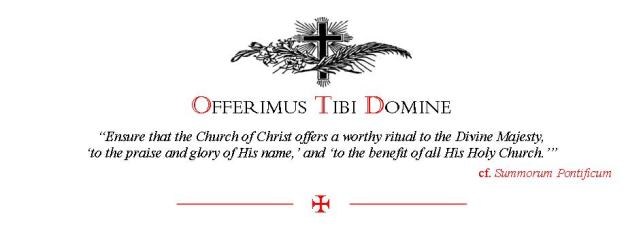(Click on the pages to open them in larger format)
Many of my readers will know that I am chaplain general in Great Britain of the Military and Hospitaller Order of St Lazarus of Jerusalem, as I often put up reports of our events and the good works the Order does - most recently, donating £10,000 to SUROL, a Leprosy Charity with Cardinal Ranjith as its patron. There is often some misunderstanding about the Order, particularly here in Britain where it is so small and the recent document from Rome concerning Equestrian orders produced a flurry of not always favourable comment fuelled by such misunderstanding. Perhaps it is the startling colour of the Order - green - particularly when seen on the priest's biretta etc that makes some people jump to the conclusion that it must be some outrageous modern invention.
Anyway the above statement issued by the Order of St Lazarus makes it clear where we stand in relation to the recent document from Rome.
Perhaps a word of explanation about the use of the glorious green.
Chaplains of the Order have worn green on their accouterments for many centuries, even though green was a more usual colour for bishops to wear.
Chaplains of the Order have worn green on their accouterments for many centuries, even though green was a more usual colour for bishops to wear.
 |
| An engraving of an Ecclesiastical Knight of the Order from 1714 |
The Church only began to regulate the colours for ecclesiastical dress in the 1200s, although these became formalised because of heraldry rather than as a result of Church directives. For a long time (originating in Spain) green was the colour for bishops and archbishops and even today, it is the heraldic colour for these prelates, as seen in their galero and fiocchi, the silk cord upon which hangs the Pectoral Cross, and the traditional instruction that a bishop's biretta be lined with green, rather than purple.
In his book on the ceremonial life and protocol of the Roman Catholic Church, The Church Visible,
James-Charles Noonan, Jr. tells how green, had by the
eleventh century, become the colour for bishops and archbishops. The Fourth Lateran Council required the colour green for patriarchs in 1215. In
the Second Council of Lyons, 1274, Pope Gregory X granted the red
galero so that his cardinals would stand out in council processions. It was also the tradition in many places to upholster the cathedra in green. According to Noonan the tradition of green as the colour for bishop’s heraldry was also the colour of their vesture. He describes this as “forest green” or a “cloth of the darkest green.” The
change to the present violet (Amaranth Red) for bishops began as early as the
pontificate of Gregory XIII (1572-1585) and by the reign of Urban VIII
(1623-1644) the change was complete.
 |
| Arms of Archbishop Duka of Prague, before he was created Cardinal |
 |
| Bishop Athanasius Schneider wearing the green and gold silk cord |
 |
| A bishop's Saturno sporting green and gold tassles |
The Order's use of the colour green, however, is unlikely to be connected to its use by prelates as it spans the past millennium.
Several legends concern King Baldwin IV who ruled Jerusalem from 1174 to
1183. After founding the Lazarus Hospital and Commandery at Seedorf in
Switzerland he had a vision which included finding a green cross in his
hand upon waking. Another legend surrounding King Baldwin IV is that
during his coronation in Jerusalem, an eagle dropped onto his head a
gold ring with a green cross embedded. What is certain is that the green
cross and the colour green have been intimatelly associated with the
Order of Saint Lazarus throughout the second millennium. There is documentary evidence from 1314 wherein the Commander of Seedorf
ordered that the green cross should be worn by the brothers on their habits.
The
green cross of Saint Lazarus is also the origin of the international
symbol for healthcare. which we see outside Chemists and Pharmacies and
on First Aid boxes. The influence of the Hospitaller Orders can still be
seen today. (St. John's Ambulance, for instance, draws it's existance
from the Hospitaller Order of St.John).





































